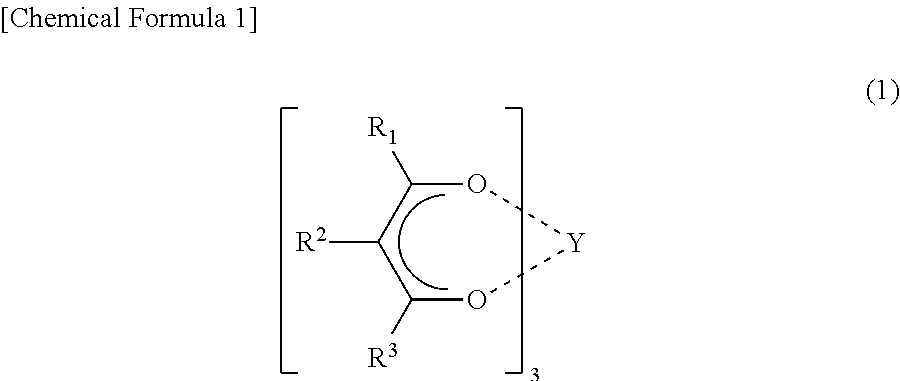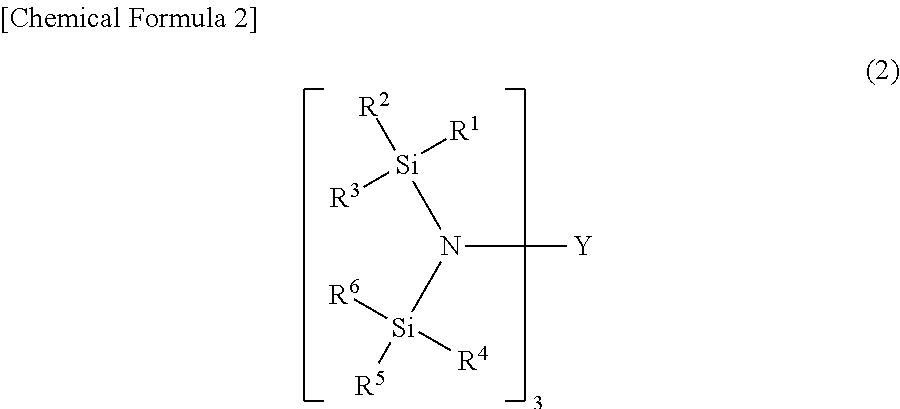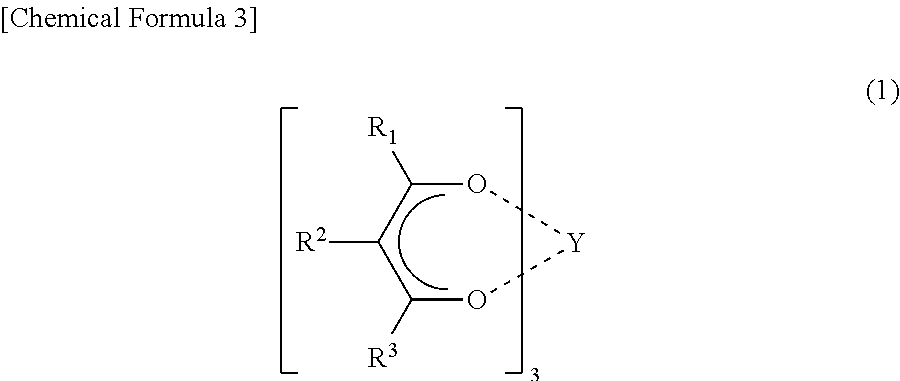Process for producing conjugated diene polymer
a technology of conjugated diene and polymer, which is applied in the direction of physical/chemical process catalysts, organic compounds/hydrides/coordination complex catalysts, physical/chemical process catalysts, etc., can solve the problems of difficult to synthesize and isolate metallocene-type complexes, and achieve high-efficiency production of conjugated diene polymers
- Summary
- Abstract
- Description
- Claims
- Application Information
AI Technical Summary
Benefits of technology
Problems solved by technology
Method used
Image
Examples
example 1
[0060]An autoclave having an internal capacity of 1.5 L was purged with nitrogen, and a solution consisting of 390 ml of toluene and 210 ml of butadiene was poured into the autoclave. After the temperature of the solution was set to 30° C., 1.5 ml of a cyclohexane solution including triethyl aluminum (TEA) (2 mol / L) was added, and the resulting solution was stirred for three minutes at 500 rpm. Next, 0.6 ml of a toluene solution including yttrium (III) tris(2,2,6,6-tetramethyl-3,5-heptanedioate) (0.05 mol / L) was added, and the resulting solution was aged at 30° C. for two minutes. After this, 0.14 ml of a toluene solution including triphenylcarbeniumtetrakis(pentafluorophenyl) borate (0.43 mol / L) was added. Then, the resulting solution was polymerized at 30° C. for 25 minutes. After this, 3 ml of an ethanol solution containing an antioxidant was added to stop polymerization. After pressure discharge was carried out in the autoclave, ethanol was fed to the polymerized solution, and p...
example 2
[0061]Polymerization was promoted under the same conditions as Example 1, except that the polymerization temperature was 20° C. The result of polymerization is shown in Table 1 and Table 2.
example 3
[0062]Polymerization was promoted under the same conditions as Example 1, except that the polymerization temperature was 10° C. The result of polymerization is shown in Table 1 and Table 2.
PUM
| Property | Measurement | Unit |
|---|---|---|
| molar ratio | aaaaa | aaaaa |
| molar ratio | aaaaa | aaaaa |
| temperature | aaaaa | aaaaa |
Abstract
Description
Claims
Application Information
 Login to View More
Login to View More - R&D
- Intellectual Property
- Life Sciences
- Materials
- Tech Scout
- Unparalleled Data Quality
- Higher Quality Content
- 60% Fewer Hallucinations
Browse by: Latest US Patents, China's latest patents, Technical Efficacy Thesaurus, Application Domain, Technology Topic, Popular Technical Reports.
© 2025 PatSnap. All rights reserved.Legal|Privacy policy|Modern Slavery Act Transparency Statement|Sitemap|About US| Contact US: help@patsnap.com



